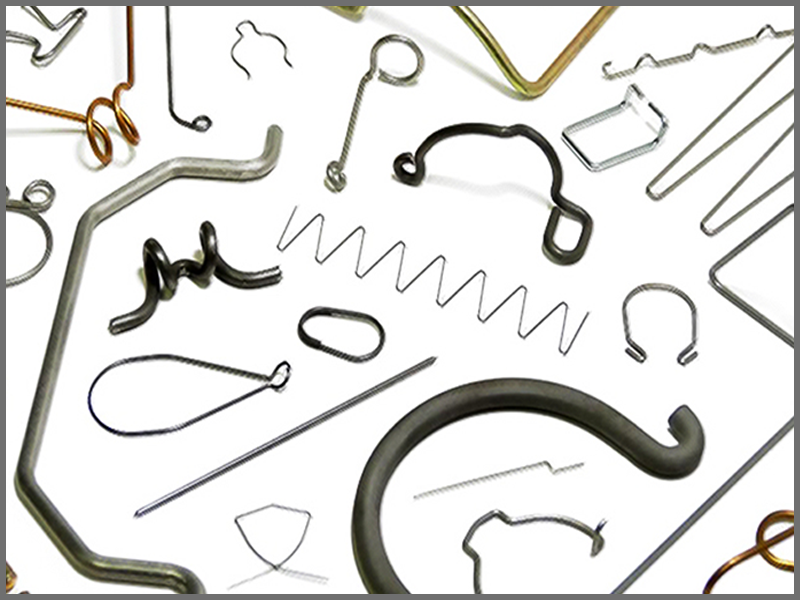Wire forms are often the unsung heroes of modern engineering, offering unique solutions to a wide range of challenges across industries. At Jackson Spring, we’ve seen firsthand how these versatile components solve problems that once seemed insurmountable. Whether you’re an engineer looking to refine your designs or a purchasing agent seeking cost-effective options, the unique forms are more than just a piece of bent metal—they’re a game-changer.
What Makes Wire Forms So Valuable?
Wire forms are crafted from various materials, including stainless steel, carbon steel, and specialty alloys. Their strength lies in their versatility. They can be manufactured to meet precise tolerances, withstand harsh environments, and perform under specific load conditions. From simple hooks to complex geometric shapes, wire forms can be tailored to fit unique applications.
These forms are crafted from various materials, including stainless steel, carbon steel, and specialty alloys. Their strength lies in their versatility. They can be manufactured to meet precise tolerances, withstand harsh environments, and perform under specific load conditions. From simple hooks to complex geometric shapes, wire forms can be tailored to fit unique applications.
Tackling Industry Challenges with Wire Forms
1. Improving Durability and Longevity
One of the most common issues across industries is the need for components that can withstand wear and tear. For example, agricultural equipment faces relentless exposure to dirt, moisture, and heavy loads. Traditional components often fail prematurely, leading to costly downtime.
Wire forms offer a solution through their customizable material properties. At Jackson Spring, we’ve worked with clients to design wire forms using corrosion-resistant materials like stainless steel and applied heat treatments to enhance their longevity.
2. Optimizing Space and Weight
Industries like aerospace and medical devices are always searching for ways to reduce weight and save space without compromising strength. Wire forms’ high strength-to-weight ratio makes them ideal for these applications.
For instance, by replacing bulkier components with a lightweight form, we can not only reduce the overall weight of the device but also improve its ergonomics for surgeons. It’s these kinds of innovations that keep us excited about what they can do.
3. Driving Cost Efficiency
Rising material and manufacturing costs are a challenge for every industry. Wire forms provide a cost-effective solution because they require less material compared to other components and often simplify assembly processes.
Many of our customers struggled to keep production costs down while maintaining quality. By replacing several welded parts with a single form, they achieved significant savings without sacrificing durability. This simple switch also streamlined their assembly process, reducing labor costs—a win-win.
4. Customizing for Unique Applications
No two industries are the same, and neither are their requirements. Wire forms shine in their ability to be tailored for specific needs. From automotive clips that can handle extreme vibrations to precision springs in consumer electronics, they are up to the task.
We’ve had clients who needed a component that could maintain tension across a wide temperature range. Our engineering team worked closely with them to develop a custom solution. The result was a reliable and efficient component that exceeded expectations.
5. Enhancing Sustainability
Sustainability is no longer optional; it’s a necessity. Wire forms support environmentally friendly manufacturing practices through their recyclability and minimal waste production during fabrication.
At Jackson Spring, we’re committed to reducing our environmental footprint. By using energy-efficient CNC wire-forming equipment and sourcing eco-friendly materials, we help our clients meet their sustainability goals.
The Role of Advanced Manufacturing
Advancements in technology have revolutionized wire form manufacturing. CNC machines allow for precise and consistent production, while simulation software ensures designs are optimized before fabrication begins. Quality assurance processes, such as stress testing and dimensional checks, guarantee that each wire form meets its intended purpose.
At Jackson Spring, we’ve invested heavily in state-of-the-art equipment. This enables us to tackle complex designs with tight tolerances. We often take on projects where a client needs a wire form with multiple bends and a specific spring action. Thanks to our advanced machinery and skilled team, we can deliver a component that performs flawlessly in their application.
Practical Tips for Engineers and Purchasing Agents
If you’re considering wire forms for your next project, here are a few key factors to keep in mind:
1. Material Selection
- Choose materials based on the environment and load requirements. For example, stainless steel is ideal for corrosion resistance, while high-carbon steel offers excellent strength.
2. Collaborate Early
- Involve your wire form manufacturer during the design phase. Early collaboration ensures the design is both functional and cost-effective.
3. Evaluate Lifecycle Costs
- While wire forms are often cost-effective upfront, their durability and low maintenance can significantly reduce lifecycle costs.
4. Prioritize Quality
- Work with a manufacturer who prioritizes quality assurance. At Jackson Spring, every wire form undergoes rigorous testing to ensure it meets the highest standards.
Looking Ahead
Wire forms continue to evolve, addressing challenges across industries with innovative solutions. At Jackson Spring, we’re proud to be part of this journey, helping engineers and purchasing agents achieve their goals with high-quality, customized wire forms.
If you’re facing a design challenge or looking to optimize your current components, let’s talk. With the right solution, the possibilities are endless.

